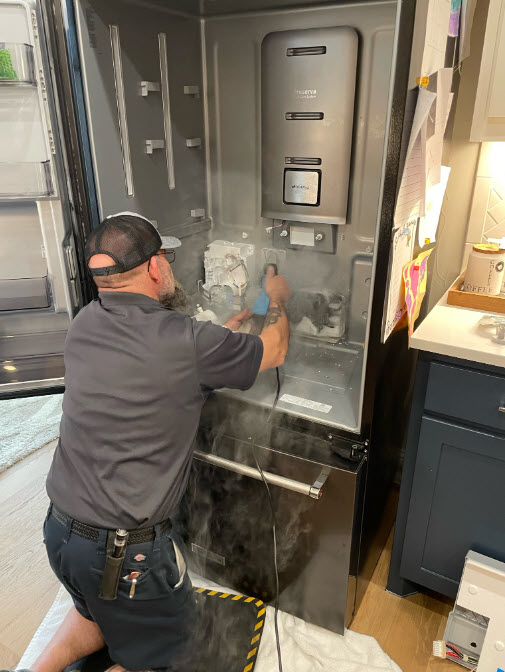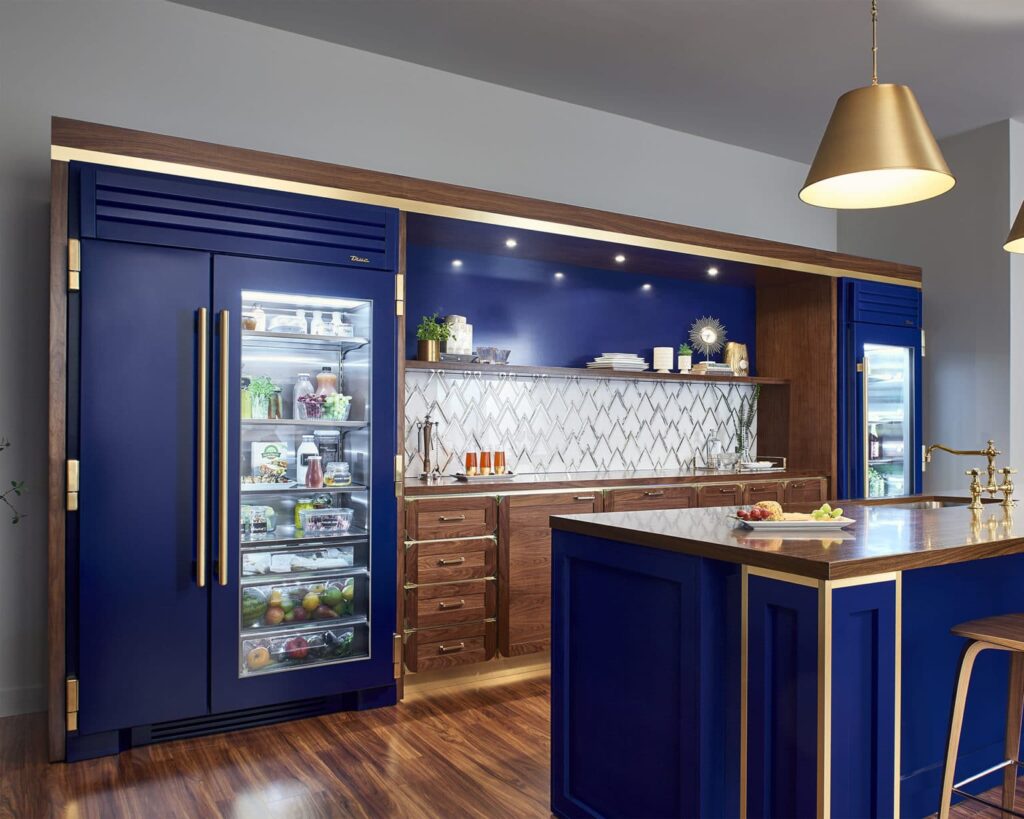The Ultimate Overview to DIY Device Repair Work Methods
From refrigerators to dishwashers, understanding how to fix and repair these gadgets can conserve you time and cash. Are you prepared to find crucial techniques that will empower you to take care of repair services with confidence?
Recognizing Usual Device Problems
When you depend on your home appliances, it can be frustrating when they all of a sudden stop working or act up. Understanding common home appliance issues can assist you fix issues successfully. For example, if your fridge isn't cooling, examine the temperature level settings or inspect the door seal for spaces. A defective cleaning maker may be as a result of a clogged drainpipe filter or a busted belt.
If your oven isn't heating, faulty components or thermostat concerns could be to condemn. Dish washers often experience problems with water drainage, so see to it the filter is clean and the drain pipe isn't kinked.
Also, pay attention for unusual audios; they usually suggest mechanical concerns. By acknowledging these signs, you can save time and possibly stay clear of expensive repairs. A little expertise goes a long method in maintaining your home appliances, so stay informed to maintain everything running efficiently.
Important Devices for Do It Yourself Services
Before diving right into DIY home appliance repairs, it is very important to gather the right tools to guarantee the process goes efficiently. Beginning with a good collection of screwdrivers, consisting of both flathead and Phillips, as they're vital for opening most appliances. You'll likewise desire a set of pliers for gripping and twisting cables or small elements.
Don't fail to remember a multimeter; it helps you test electric components and identify problems effectively. A socket collection comes in handy for loosening or tightening screws, while an energy blade can be helpful for reducing cords or opening product packaging.
Ultimately, consider having a flashlight on hand to light up dark areas inside your devices. With these vital tools, you'll be fully equipped to take on numerous repair services, conserving both time and cash. So, collect your equipment and prepare to roll up your sleeves!
Safety First: Precautions to Take
Before you start any type of appliance repair service, it's essential to prioritize safety. Make sure you wear personal safety devices, separate the power source, and maintain your workspace organized. These straightforward precautions can help prevent mishaps and assure a smoother repair procedure.

Personal Protective Devices
Safety and security equipment is a crucial component of any kind of Do it yourself device fixing project. Steel-toed boots are likewise a smart choice, specifically when raising heavy devices. Bear in mind, being prepared with the appropriate equipment keeps you secure and concentrated on completing your repair efficiently.
Source Of Power Interference
To ensure a safe do it yourself appliance repair, detaching the source of power is necessary. Before you start any type of work, you should transform or unplug the device off the breaker. This simple action avoids electrical shocks and assurances that you can concentrate on the repair without fretting about unintended activation. Always ascertain that the appliance is off by checking it with a voltage tester. If you're dealing with bigger devices, like a washer or clothes dryer, see to it to protect the power cable and avoid any call with water. Remember, security initially! As soon as you're confident that the power is detached, you can confidently wage your repair services, recognizing you've taken the essential preventative measures to safeguard on your own.
Work Location Organization
An efficient work location can make all the distinction in your DIY appliance repair service project. Beginning by clearing your work space of clutter to protect against accidents and disturbances. A neat room not just boosts effectiveness but likewise maintains you safe while you function on your home appliance repair.
Step-by-Step Overview for Fridge Repair Works
When your refrigerator starts acting up, it can be frustrating, yet dealing with the trouble on your own can save you money and time. First, unplug the refrigerator to guarantee safety and security. Inspect for typical issues like temperature level variations or uncommon noises. Examine the thermostat setups; they could be established too high if it's not cooling. Next off, clean the condenser coils, which commonly gather dust and particles. For a noisy refrigerator, inspect the follower and confirm it's not obstructed.
If there's water merging within, evaluate the door seals for damages or dust, and tidy them if required. For ice accumulation, clear the defrost drain. Plug the fridge back in and monitor it for a couple of hours as soon as you have actually attended to the problem. If the trouble lingers, you might require to replace a malfunctioning part, like the compressor or fan motor. Bear in mind, do not think go to this website twice to consult the guidebook or look for specialist assistance if needed.
Taking Care Of Washing Machine Issues
Just like fridges, washing devices can provide their own collection of difficulties, but lots of problems can be resolved with a bit of troubleshooting. If your machine will not begin, check the power cord and verify it's connected in.
If your clothing aren't getting tidy, take into consideration the water degree and cleaning agent kind; making use of also much cleaning agent can produce excess suds, impacting performance. For leakages, analyze the tubes for fractures or loose connections. Tightening up these can usually resolve the issue. Normal upkeep, like cleaning up the filter, can avoid many problems from emerging. Remember, a little troubleshooting goes a lengthy means in keeping your cleaning device running smoothly.
Repairing Ovens and stoves
Exactly how can you troubleshoot typical issues with your stove or cooktop? Beginning by inspecting the power supply. Make sure it's plugged in and the circuit breaker is not tripped. If it's a gas stove, verify the gas shutoff is open. Next off, test the heaters: if they do not fire up, clean the igniter and look for clogs in the burner ports.
If your oven isn't home heating, examine the temperature settings and verify the door seals tightly. If it's harmed., a damaged home heating element might likewise be the culprit; you may require to change it.
For irregular food preparation, turn your pans and consider making use of an oven thermostat to confirm precise temperatures. Ultimately, if you listen to uncommon noises or smell gas, shut off the device promptly and seek advice from a specialist. By complying with these actions, you can determine and settle many typical stove and cooktop concerns effectively.
Repairing Dishwashers Made Easy
When your dishwasher begins breaking down, it can be discouraging, but addressing common concerns isn't as tough as it seems. You'll discover detailed troubleshooting methods that will help you pinpoint the problem, in addition to the vital tools you'll require to tackle fixings yourself. Allow's make fixing your dish washer a breeze!
Common Dishwasher Problems
While websites dishwashing machines are developed to make your life simpler, they can occasionally face common concerns that leave you really feeling discouraged. One frequent problem is bad cleaning efficiency; this typically happens because of clogged up spray arms or unclean filters. You might also see water pooling near the bottom, which can suggest a defective drainpipe or a kinked pipe. If your dish washer's door won't lock, maybe a straightforward concern with the lock system or door seal. Furthermore, weird sounds can signal loosened parts or damaged elements. If you scent something strange, it may be time to inspect for food debris or a malfunctioning electric motor. Addressing these issues early can conserve you time and headache in the future (Emergency Sub-Zero Repair Dependable Refrigeration & Appliance Repair Service).

Step-by-Step Troubleshooting
Prior to diving into fixings, it's essential to determine the particular problem your dishwasher is encountering. If it's not cleaning properly, Beginning by checking. Check the spray arms for obstructions and warranty they spin openly. If it's dripping, analyze door seals and pipes for any kind of damage. For strange sounds, listen carefully during cycles; foreign items may be embeded the filter or impeller. If your dishwashing machine won't begin, examine the power supply and door latch. Do not forget to consult your user handbook for repairing suggestions details to your model. By systematically resolving each possible problem, you can pinpoint the issue and take the required actions to repair it, making your dishwashing machine feature like brand-new once more.
Important Repair Devices
Having the right devices at your disposal can make all the distinction when fixing your dishwasher. Beginning with a screwdriver collection, as you'll typically require both Phillips and flathead options. A multimeter's essential for diagnosing electrical problems, while pliers can assist you grip and control numerous parts. Do not forget a bucket or towels for any water spills during repair services.
If you're taking on blockages, a drainpipe snake or a wet/dry vacuum cleaner will be invaluable. You could also desire a level to assure your dishwasher's properly lined up. Safety gear like handwear covers and safety glasses will shield you while you work. With these essential tools, you'll be fully equipped to deal with any dishwasher repair work obstacle that comes your way.
Regularly Asked Concerns
If a Home Appliance Is Worth Repairing?, just how Do I Determine.
To identify if a home appliance's worth repairing, consider its age, repair service prices, and existing value. You might desire to invest in a new version instead - Dependable Refrigeration & Appliance Repair Service SubZero Repair. if repairs surpass half the substitute expense.
Can I Discover Replacement Parts Locally for My Appliance?
Yes, you can commonly find replacement components in your area for your home appliance. Examine hardware stores, appliance service center, or regional classifieds. Don't neglect to bring the design number to guarantee you obtain the proper part!
What Typical Mistakes Should I Prevent When Repairing Devices?
When fixing home appliances, prevent rushing via diagnostics, ignoring safety and security preventative measures, or making use of wrong tools. Don't skip checking out manuals or enjoying tutorials; they supply essential guidance. Hold your horses and complete to guarantee successful repairs and stop more damages.
How much time Does a Typical Do It Yourself Device Repair Take?
A regular do it yourself appliance repair usually takes one to three hours, depending upon the intricacy. You'll wish to collect your tools and materials first, and comply with instructions very carefully to prevent unnecessary hold-ups.
Are There Any Kind Of Warranties for DIY Home Appliance Fixes?
When you tackle DIY appliance repairs, service warranties commonly do not cover your job. Nevertheless, some suppliers might recognize warranties for components you change. Always check your home appliance's guarantee terms prior to beginning any type of repair services to avoid problems.
Before diving into DIY home appliance repairs, it's essential to collect the right tools to assure the process goes efficiently.Before you begin any type of home appliance repair service, it's crucial to prioritize security.To guarantee a risk-free Do it yourself device repair service, disconnecting the power resource is vital.An efficient job area can make all the distinction in your Do it yourself appliance repair work project. Always inspect your device's service warranty terms before starting any kind of repair work to global appliance repair prevent problems.